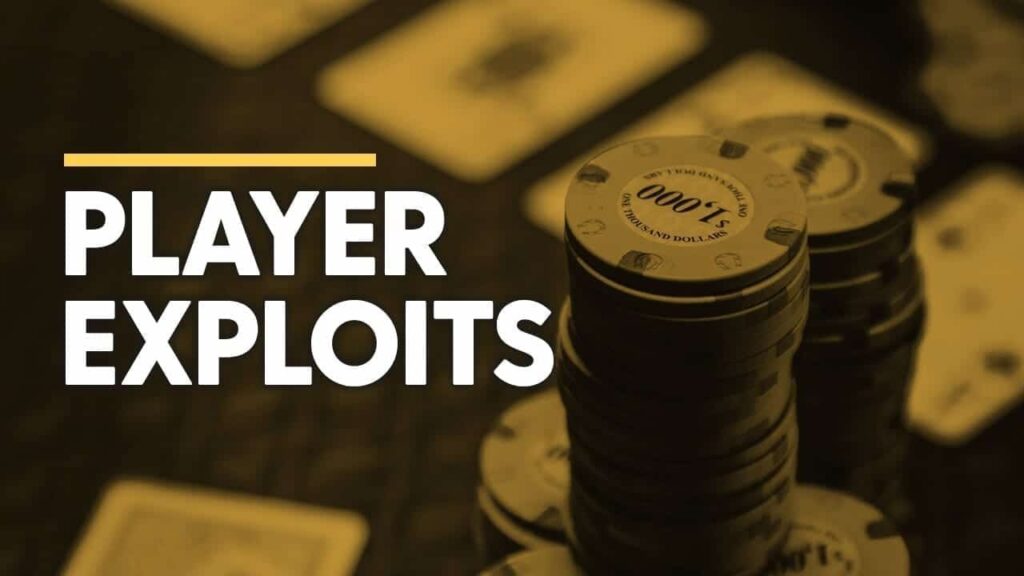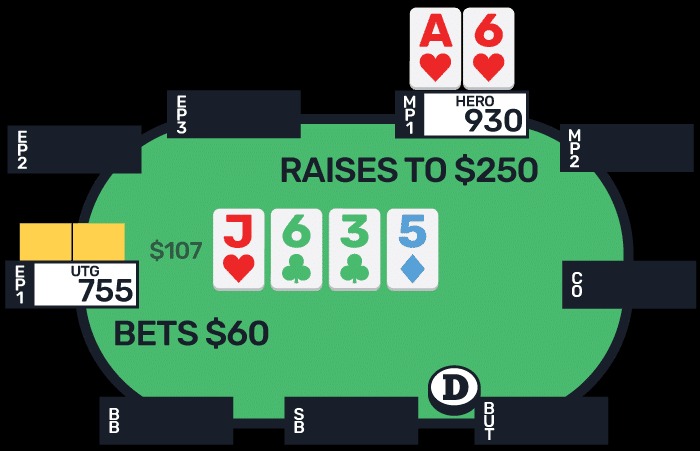Understanding Exploitation in Poker
Poker is a game of strategy, where swerte99 identifying and capitalizing on your opponents’ weaknesses can be the key to success. The essence of poker involves pinpointing vulnerabilities in your opponents’ strategies and leveraging those weaknesses to your advantage. To excel in this game, it’s crucial to grasp how to exploit these vulnerabilities effectively.
The Essence of Exploitation
Exploitation in poker refers to the process of taking advantage of an opponent’s strategic weaknesses. For instance, if an opponent bluffs too often, you can exploit this tendency by calling them more frequently with hands that have reasonable equity. Similarly, if an opponent folds too often, you can increase your bluffing frequency to take advantage of their tendency to give up. Understanding these dynamics allows you to adjust your play and enhance your profitability.
Aggression vs. Folders
One of the most fundamental exploitative strategies in poker is increasing aggression against opponents who fold frequently. For instance, if an opponent frequently folds to 3-bets preflop, you should consider expanding your bluff 3-betting range. This tactic not only applies preflop but can also guide your decisions on continuation bets (C-bets), double-barrels, and even triple-barrels.
Calculating Breakeven Percentages
When implementing aggressive strategies, it’s essential to understand breakeven percentages. For example, a pot-sized bet requires your opponent to fold 50% of the time to make the bet profitable. If they fold 75% of the time, you are making a profitable decision in the long run. Mastering these calculations is crucial for effective exploitation.

Adapting to Opponent’s Tendencies
Adjusting your aggression based on your opponent’s folding frequency allows you to exploit their weaknesses effectively. By ramping up your bluffing frequency against players who fold too often, you capitalize on their predictable tendencies. This approach requires a solid grasp of the dynamics of each betting round and the ability to read your opponent’s behavior accurately.
Aggression vs. Non-Folders
When dealing with opponents who rarely fold, the strategy shifts from bluffing to value betting. Increasing aggression with weaker hands, such as marginal top pairs or second-pair holdings, can exploit opponents who frequently call with second-best hands. This approach is not limited to the river; it can be effectively applied on earlier streets as well.
Expanding Value-Betting Range
Against opponents who are inclined to call down with weaker hands, expanding your value-betting range can be highly profitable. This tactic involves betting with hands that might be considered weaker in a standard value-betting range, exploiting their tendency to call with swerte99 second-best hands.
Strategic Aggression on Earlier Streets
Applying this strategy on the flop and turn can be particularly effective against players who play their draws predictably. By being aggressive on these streets, you force opponents to pay more for their draws and extract value from hands that would otherwise check back. This approach requires careful consideration of bet sizing and understanding how your opponent will react to different bet sizes.
Over-Folding vs. Nits
Exploiting tight players, or “nits,” involves recognizing their conservative tendencies and swerte99 adapting your strategy accordingly. If a nit double-barrels, their tendency to bet only strong hands suggests they likely hold a premium hand. To exploit this, you should avoid committing chips with second-best hands unless you have a strong reason to believe they might be bluffing.
Identifying Tight Tendencies
Understanding when a player is likely to be swerte99 holding a strong hand requires paying attention to their betting patterns. Nits, in particular, will often reveal their strength through their betting frequency and sizing. By identifying these tendencies, you can make more informed decisions about when to fold and when to continue.
Avoiding Overfolding
While it’s essential to swerte99 recognize tight tendencies, it’s also crucial to avoid overfolding. Overfolding can make you vulnerable to exploitation, as opponents might adjust their play to capitalize on your predictability. Balancing your folds with occasional calls or raises helps prevent being exploited yourself.
Defending vs. Over-Aggression
When facing opponents who are overly aggressive and prone to bluffing, the key to exploitation is to defend more frequently. By calling and raising more often, you can force aggressive players to reveal their hand strength and disrupt their strategy. This approach involves defending a wider range of hands and ensuring you don’t fold too often to their bluffs.swerte99
Competing for Pots
Aggressive players thrive on dictating the pace of the game. By defending more hands and occasionally raising, you can challenge their dominance and create opportunities to win pots that might otherwise go uncontested. This tactic helps to level the playing field and puts pressure on aggressive opponents.
Effective Bluff-Catching
Bluff-catching becomes a crucial strategy when facing overly aggressive opponents. By calling down with hands that have potential, you force them to show their hand and potentially save chips in situations where you might otherwise fold. Effective bluff-catching requires a good read on your opponent’s tendencies and a solid understanding of their betting patterns.swerte99
Integrating Swerte99 Principles
Incorporating swerte99 principles into your game involves understanding and applying the core concepts of exploitation with a focus on maximizing profitability. This approach entails recognizing and adapting to opponents’ weaknesses, adjusting your strategy dynamically, and ensuring that you’re not falling into predictable patterns yourself.
Practical Application and Study
To effectively implement these strategies, practice and study are essential. In your next poker session, actively look for opportunities to apply these exploitative tactics. Even if you choose not to act on them immediately, make a note of these situations for later review. By training your mind to recognize these exploitable spots, you’ll enhance your ability to capitalize on profitable opportunities.
Conclusion
Mastering the art of exploitation in poker requires a deep understanding of your opponents’ tendencies and the ability to adapt your strategy accordingly. By focusing on aggression versus folders, aggression versus non-folders, exploiting over-folding tendencies, and defending against over-aggression, you can significantly improve your profitability. With dedicated practice and a keen eye for strategic adjustments, you’ll be well-equipped to exploit weaknesses and enhance your performance at the table.

